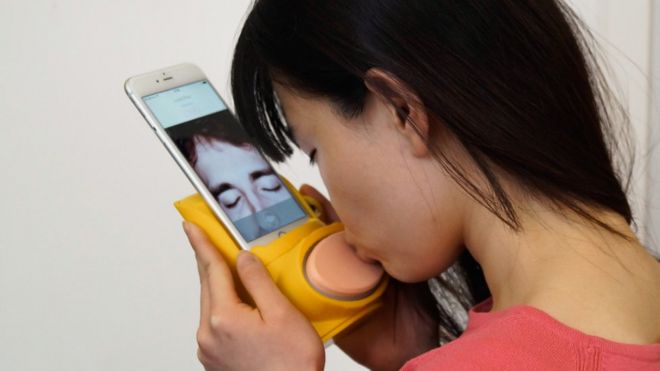Dr Anders Ynnerman moves his hands over the images on the touchscreen, slicing, dicing and rotating, revealing layer upon layer of skin, muscle and bone.
The audience watches in awe.

They’re looking at a full-body scan of a traffic accident victim, and they can see every injury in larger-than-life detail, including the cause of death: a broken neck, caused by a blow to the head.
Dr Ynnerman, a scientific data visualisation expert and the director of the Norrköping Visualisation Centre in Sweden, was speaking at a session on virtual and augmented reality (AR/VR) at EmTech Asia.
The conference, organised by the MIT Technology Review to explore global emerging technologies, was held in Singapore from 14-15 February 2017.
These full-body scans or ‘virtual autopsies’, he said, are treasure troves of medical data; he takes great care to present them with the utmost respect for the persons who died under tragic circumstances.
Touched by Data
The datasets are generated through computerised tomography (CT) scans, which produce around 25,000 slices of data that together form a full virtual replica of the human patient.
Dr Ynnerman uses mathematics and computer graphics to combine these slices into a huge block of data that can be visualised in three dimensions, and manipulated using touch interfaces.

The technology is clearly a huge boon for medical schools and hospitals.
But he quickly realised its potential for communicating science to the general public. His team has gone on to scan all manner of museum artefacts, including Egyptian mummies, fossils and a wide range of animal specimens.
They have placed touchtable devices in museums around the world — including the Science Centre Singapore — for visitors to interact and play with the data.
“We’ve gone from very basic mathematical principles all the way out into the museum gallery. I see children exploring scientific data. When they interact with it they’re getting interested in the content, but they’re also getting interested in the technology.”
Dr YnnermanìI added: ” That’s the best reward you can get as a professor. Seeing kids playing with your stuff is much more important than getting citations and papers!”
Kissed by innovation
Also speaking at the session was Dr Adrian David Cheok, director of the Imagineering Institute in Malaysia and Chair Professor of Pervasive Computing at the City University of London.
(Dr Cheok was formerly a professor at the National University of Singapore, where he founded the Mixed Reality Lab; it has since moved to London.)

Because non-verbal interactions make up a large part of how humans communicate, talking to someone over the internet still pales in comparison to meeting him or her in person, said Dr Cheok.
Thus, his goal is to develop tools that let us perceive the world through the internet using all of our five senses including touch, taste and smell.
“In the future, we’ll move from the age of information, where we are today, into the age of experience,” he said.
“You can share any experience through the internetóyou can feel, taste and smell what it’s like to be anywhere in the world.”
His group has developed a range of devices aimed at letting you do just that.
For those who crave touch, there is the Huggy Pajama, a wearable device that lets parents and children exchange virtual hugs.
More recently, the group introduced the Kissenger, which does exactly what you think it does — the silicon lip-like device connects to your smartphone and lets you kiss someone over the internet.
Smells like Tech spirit
Besides touch, the senses of taste and smell are also powerfully evocative.
“Taste and smell are directly intermingled with the limbic system of the brain, which is responsible for emotion and memory,” said Dr Cheok.
“For example, smell can trigger a memory of your grandmother, or trigger an emotion — it can make you feel happy or sad if the same smell has done that in the past.”
Engineering taste and smell, however, is no trivial task.

Dr Cheok’s team has developed smartphone devices that let users send their friends smells over the internet; these involve the use of an atomiser and scent cartridges. But such devices have drawbacks — only one smell can be sent per cartridge, and cartridges have to be replaced once they run out of scent.
Thus, instead of resorting to chemicals, Dr Cheok is working on ways to directly stimulate the tastebuds or olfactory (smell) receptors.
By placing an electrode on your tongue, for example, he can deliver electrical signals that make you taste something sour; yet another device generates a sweet taste by stimulating the appropriate receptors on the tongue with heat.
Similarly, the team has also tried to electrically stimulate the olfactory receptors inside the nasal cavity to recreate smells.
Wearing this device, however, is still a little uncomfortable.
Although such devices may not be available on the mass market just yet, Dr Cheok believes that it is only a matter of time before they find their way into our homes.
“People really want to experience all of the five senses — they want to be able to have dinner with their grandmother even if she’s on the other side of the world.”














